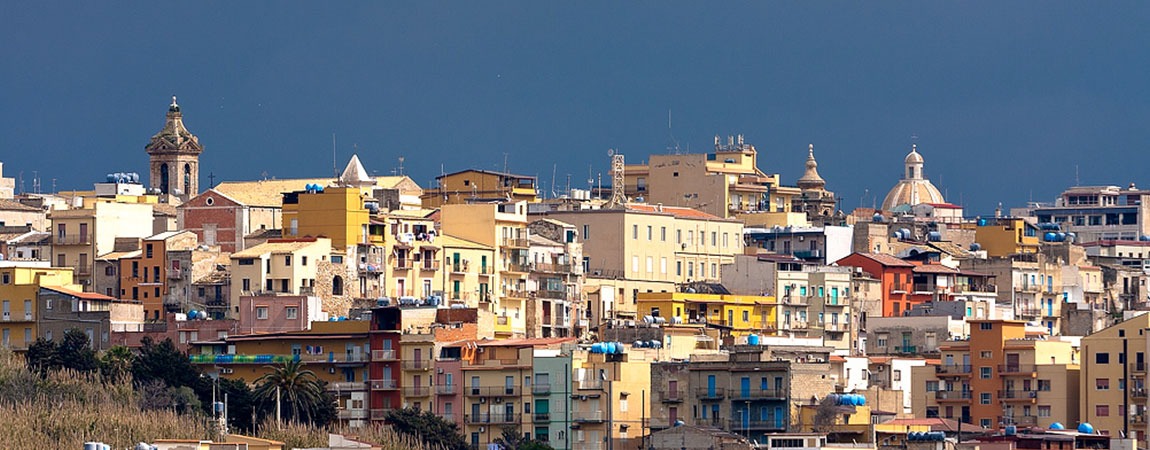
Gela, whose name was Terranova di Sicilia until 1927, is an important Sicilian city that is part of the province of Caltanissetta. Let's find out its origins and history.
Gela is a city of over 70.000 inhabitants located in the southernmost part of Sicily in an area that essentially develops at 50 meters above sea level.
The origins of Gela are quite ancient as confirmed by the fact that over the centuries it has taken different names. According to historical reconstructions, this inhabited center was founded in the XNUMXth century BC and was called Lindos. Subsequently for several decades the city was called Gela probably until the moment in which it was completely destroyed in 405 BC and then rebuilt in 339 BC by Timoleonte.
Unfortunately, the fate of this community seemed to be sealed because after less than 50 years it had to deal with a new destruction that seemed definitive. Fortunately also due to the proximity to an important river of the same name which probably gave its name to the city, a new residential nucleus was reformed which over the centuries has changed its name several times. Around 1550 it was called Terranova and later in 1862 Terranova di Sicilia. In 1927, to commemorate the glories of the ancient Greek city, it was again called Gela.
Gela's story
La history of Gela it begins around the fifth millennium BC, but to have at least the semblance of a small inhabited centre, we have to wait for the year 668 BC thanks to the arrival of the Greeks from the city of Lindos.
There is historical evidence of what happened thanks to the reconstruction carried out by the Athenian historian Thucydides who was able to tell how the Greek colonists who came from Rhodes and Crete decided to occupy this space and to choose it to build their city which was called Lindioi.
Another important year in the history of Gela is 500 BC. This was a rather difficult period for the city because the tyranny began with the rule of Cleander. There were several disputes so much so that the latter was assassinated favoring the rise to power of his brother Hippocrates. However, this bloody event was important for Gela because a period of great splendor began under the leadership of Hippocrates both economically and politically.
Unfortunately the city was targeted by the Carthaginians who attacked and completely destroyed it in 405. Subsequently he was the leader Corinthian Timoleon who decided to take care of the reconstruction by settling settlers of theKos island.
Unfortunately the rebirth was not very successful also due to the new tyranny which practically led to the destruction of Gela of which there was no more trace until 1233 when Frederick II of Swabia decided to rebuild the city and give it the name of Eraclea Terranova. Subsequently, as mentioned in the previous paragraph, it assumed the name of Terranova di Sicilia and then of Gela from 1927.
It should be emphasized that even during the Second World War Gela played a fundamental role because in July 1943 the seventh American army landed there. Also in this area between 10 and 11 July of the same year there was an epic battle known just as Battle of Gela in which the Americans fought against a German and an Italian division.
What to see in Gela
On the territory of Gela there are several architectural structures of cultural and historical interest such as the mother church dedicated to Santa Maria Assunta which is among the most shining examples of neoclassical style in the area. Absolutely to visit are also there church of Sant'Agostino whose construction was started in 1439 and the church of the Capuchin friars minor. As far as civil architecture is concerned, the most important buildings all date back to the twentieth century City Palace made in rationalist style or the archaeological Museum which was designed by Luigi Pasquarelli. In addition there are several archaeological sites that can be visited such as theAcropolis of Gela which refers to the ancient part of this territory. Surprising is also thearchaeological area of Bosco Littorio, a sandy area accompanied by extremely dense vegetation where the remains of an ancient neighborhood dating back to 480 AD have been found. C. Lovers of sea instead, they will be able to enjoy a few hours of relaxation and sunshine at the Manfria beach.
How to get to Gela
To get to Gela starting from Agrigento it is necessary to travel about 75 km for a total of 70 minutes of walking crossing the state road 115. For those arriving from Caltanissetta instead, the kilometers are 70 for a total of about 60 minutes of travel through the state road 626.
© Image by Giovanbattista Brancato from Abbiategrasso – Milan, Italy, CC BY 2.0, via Wikimedia Commons









